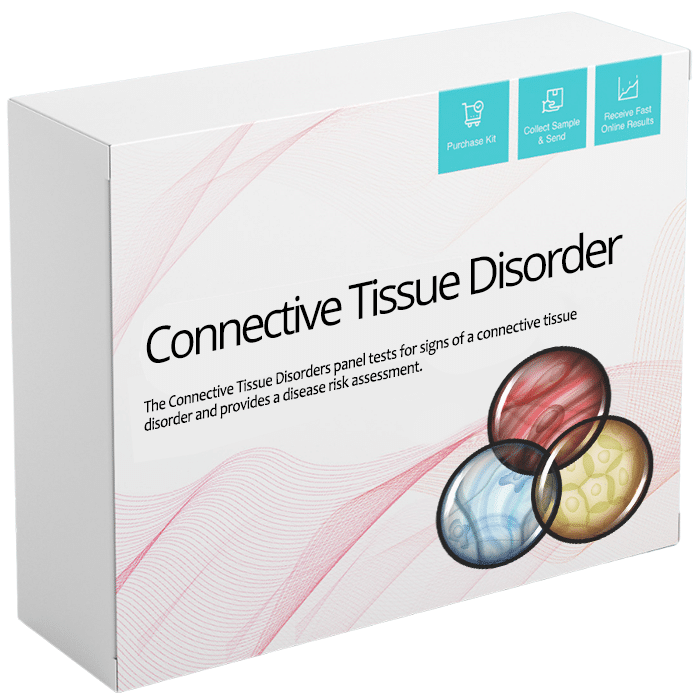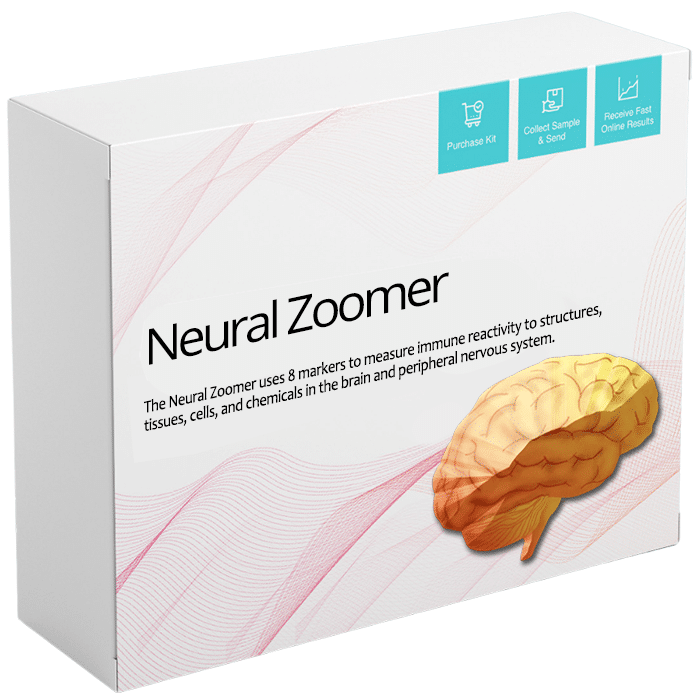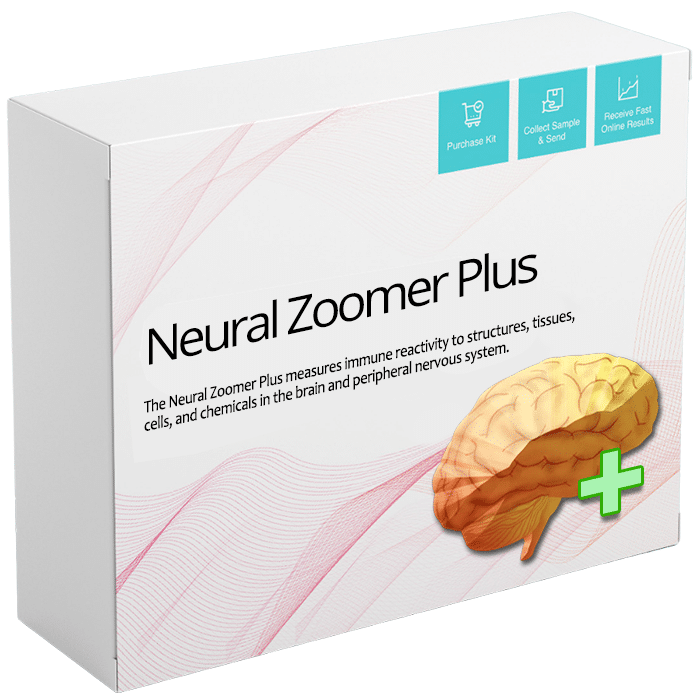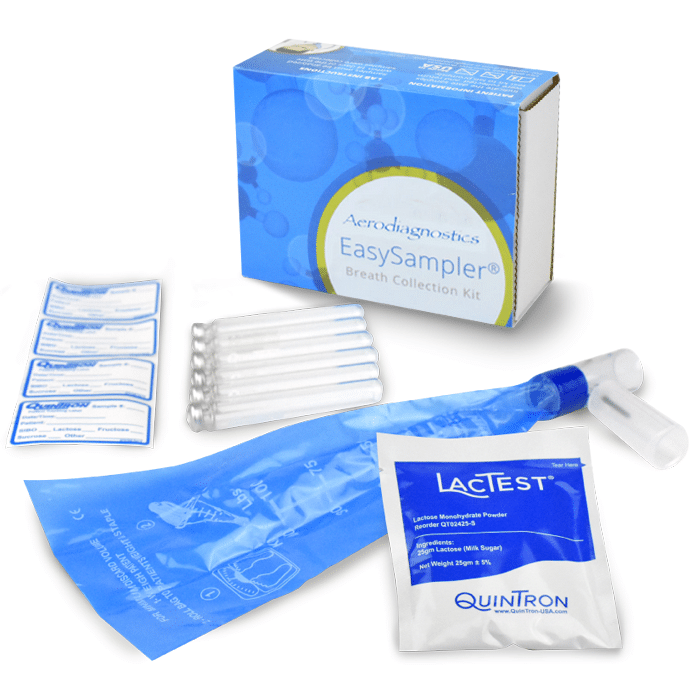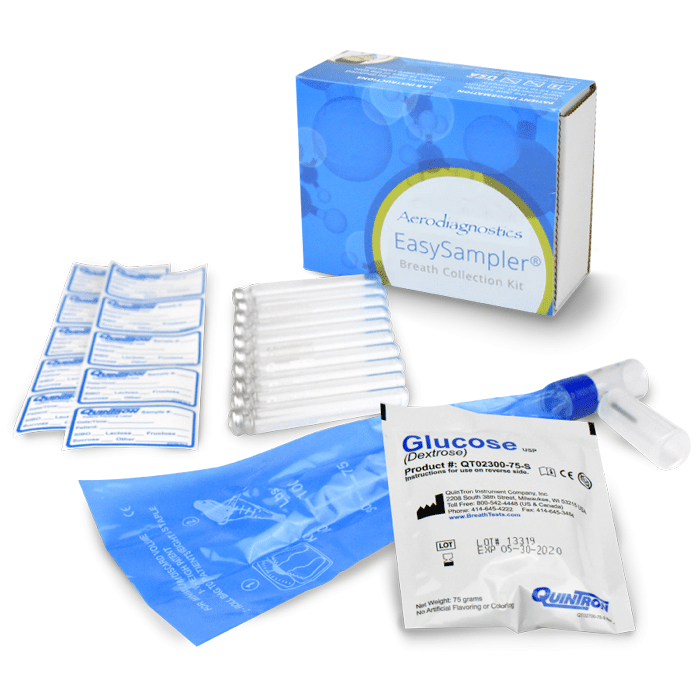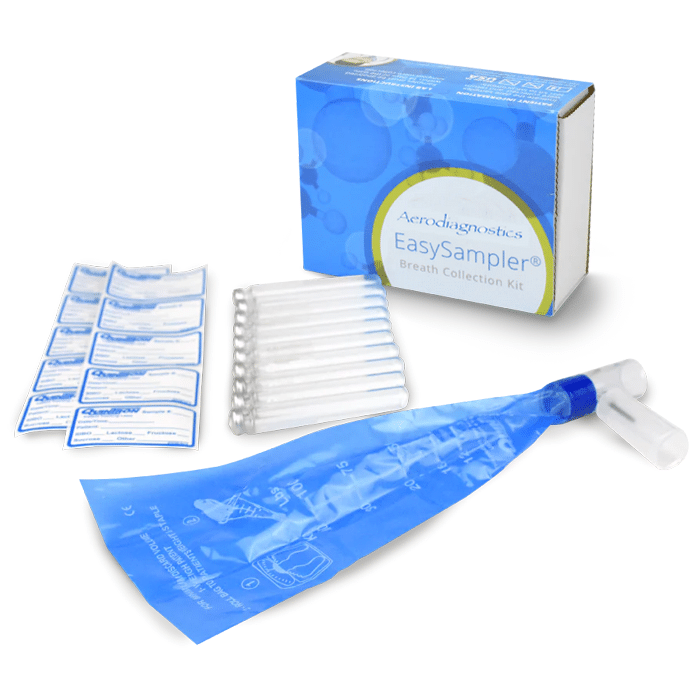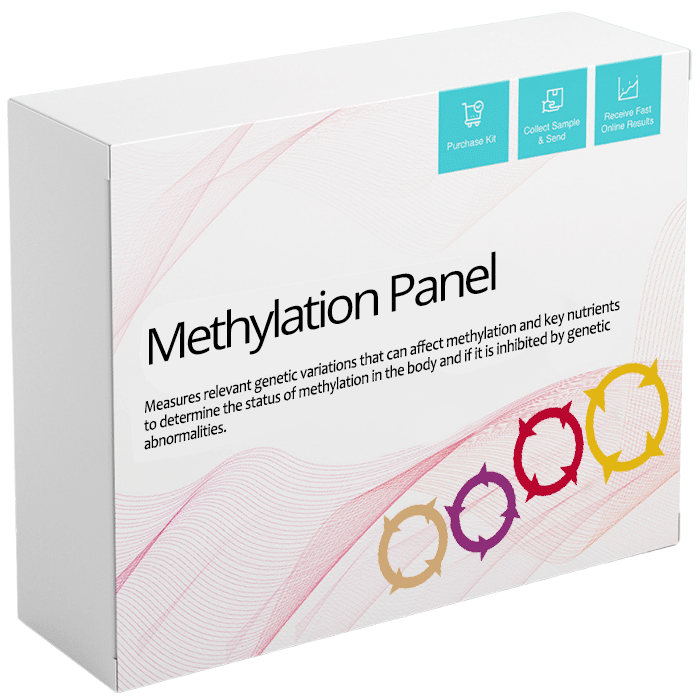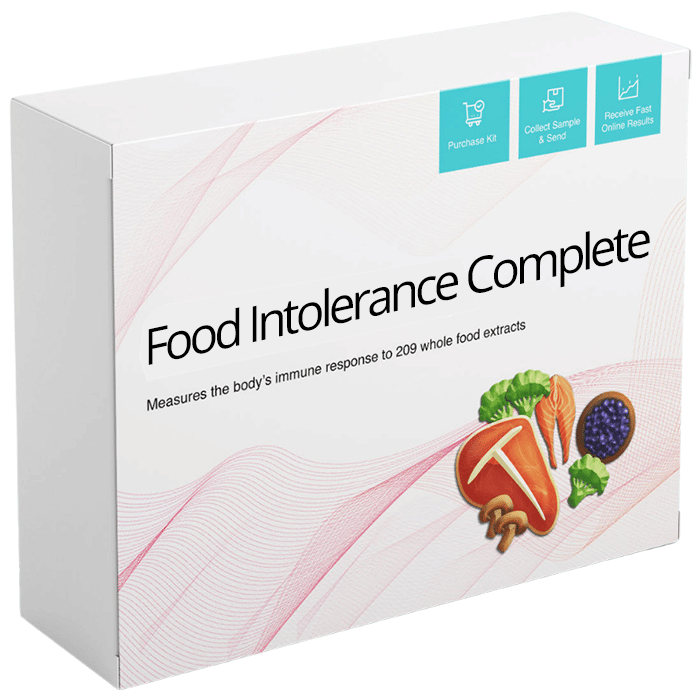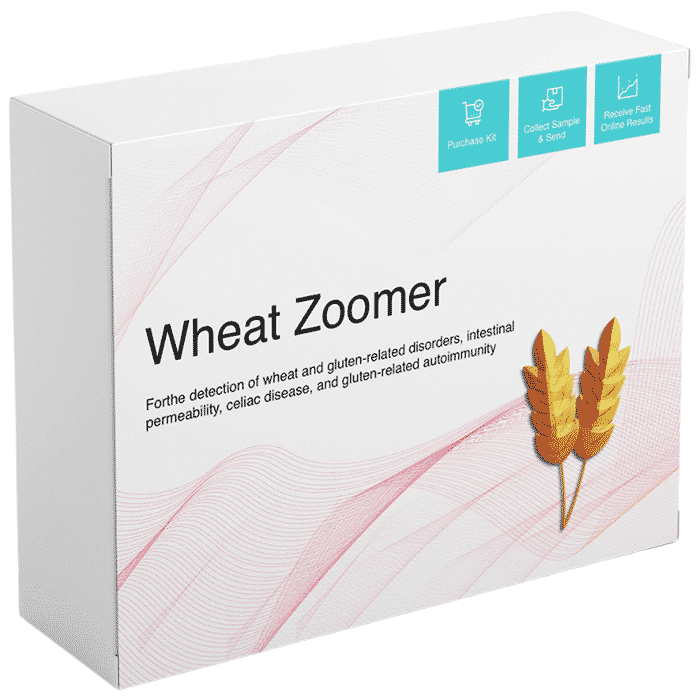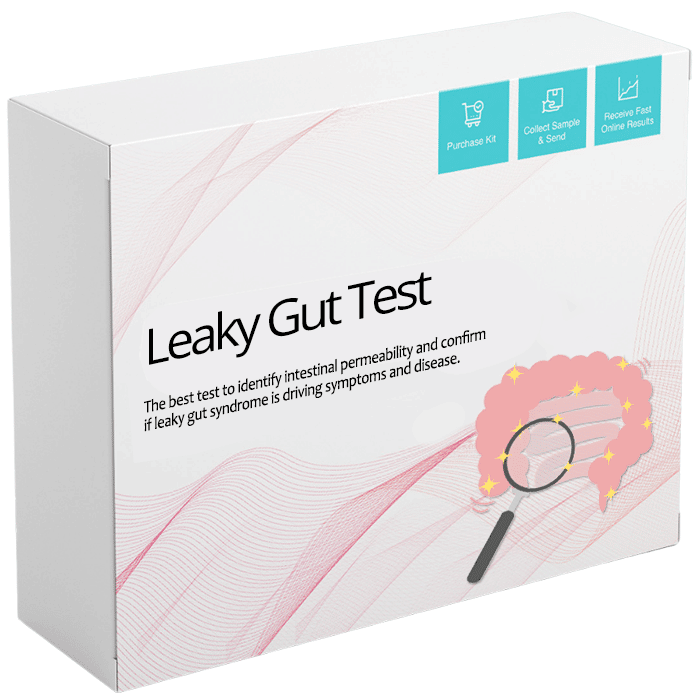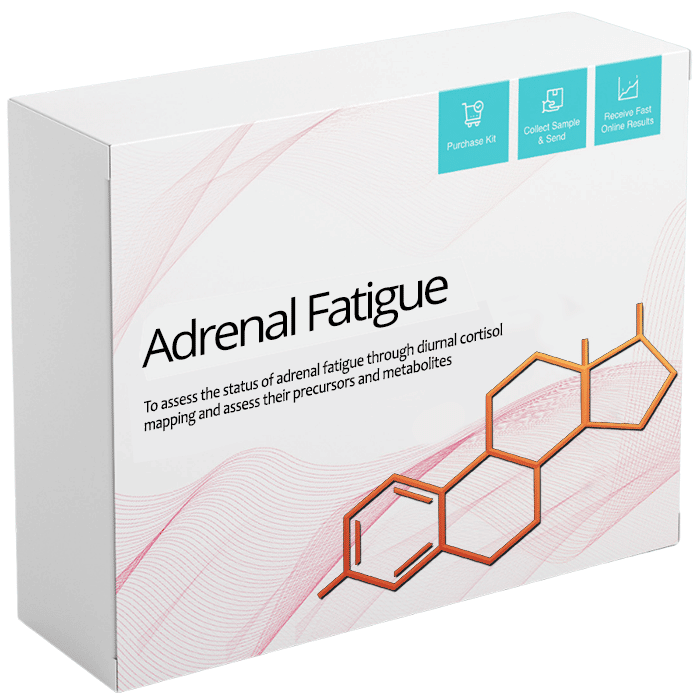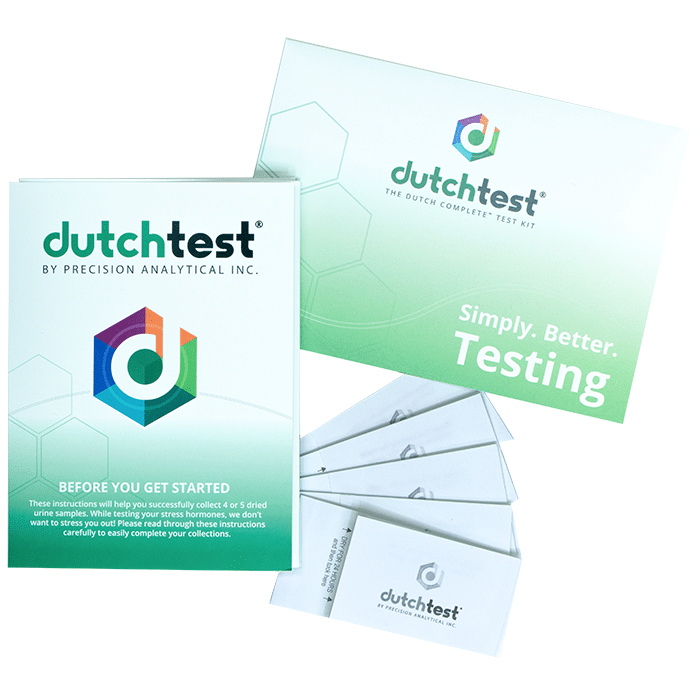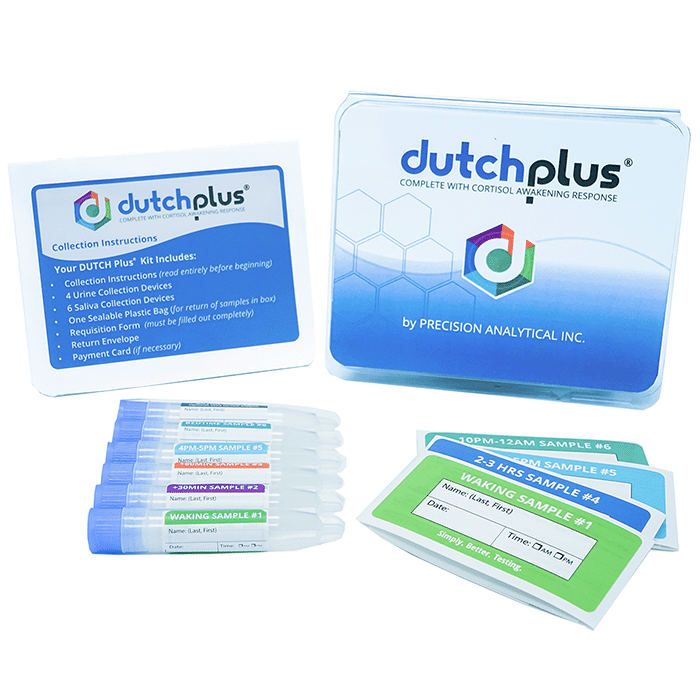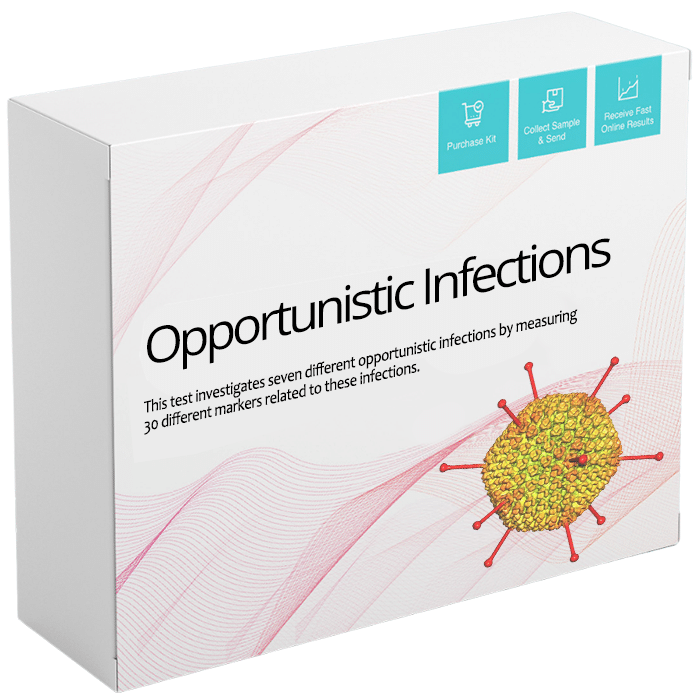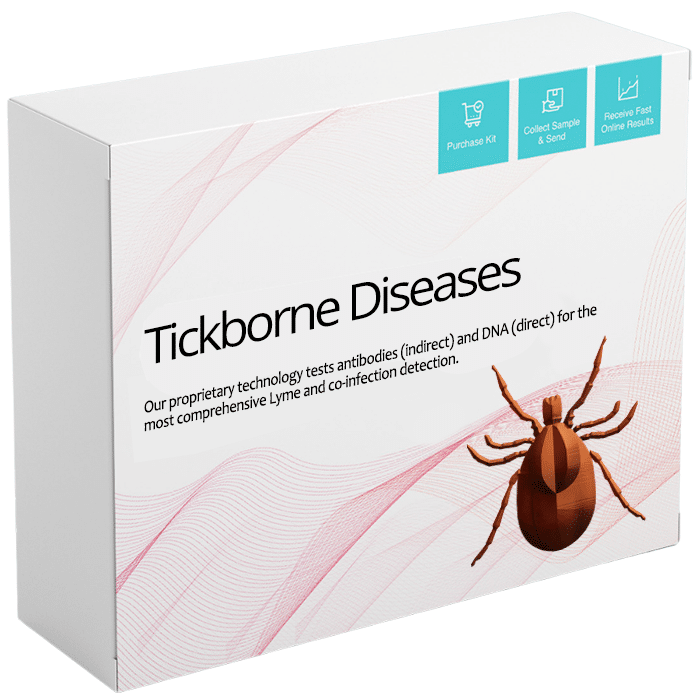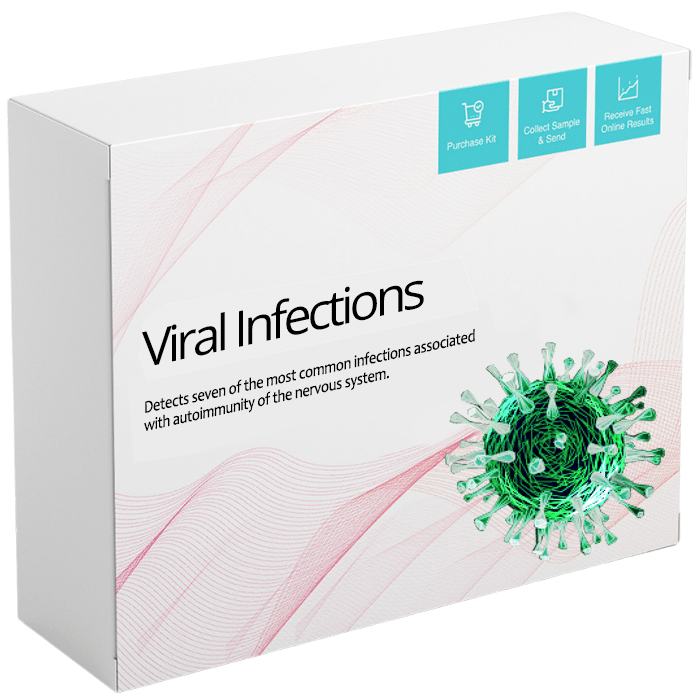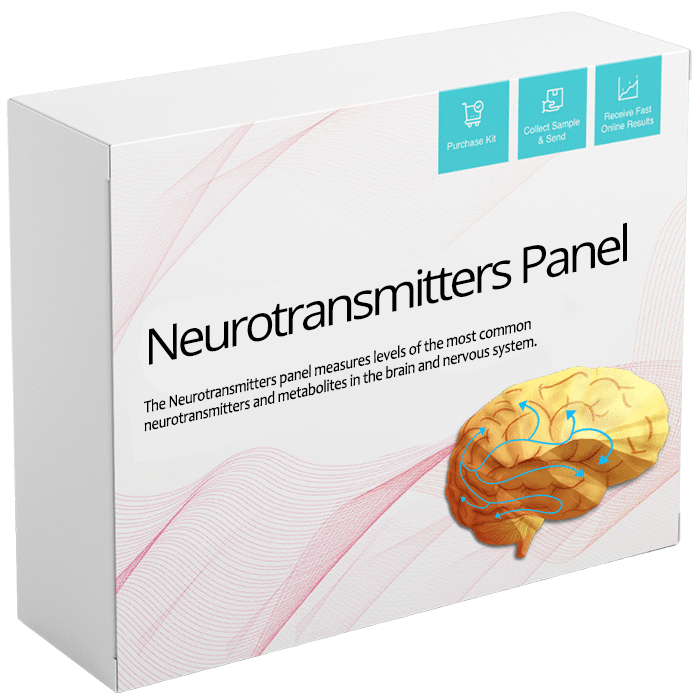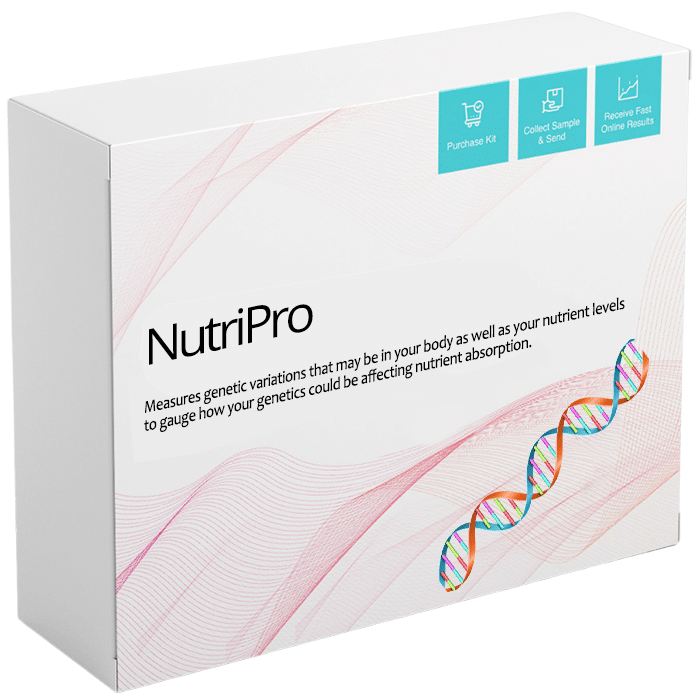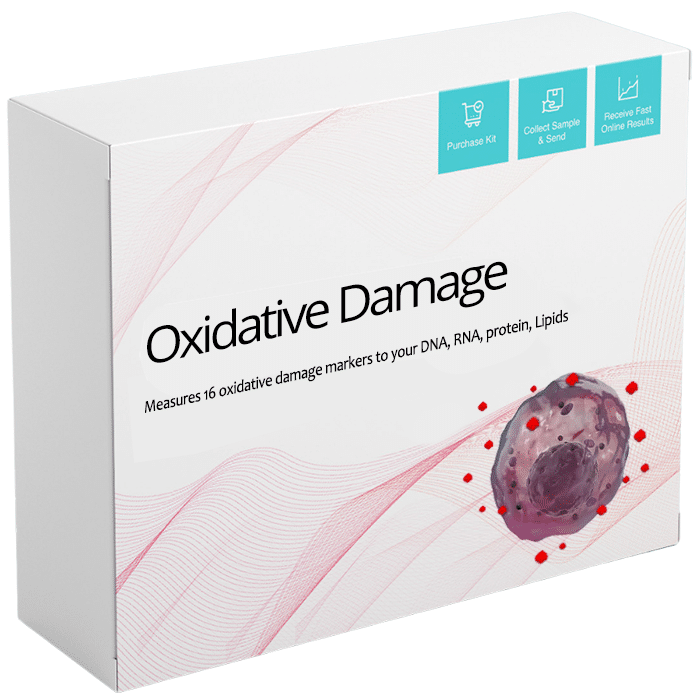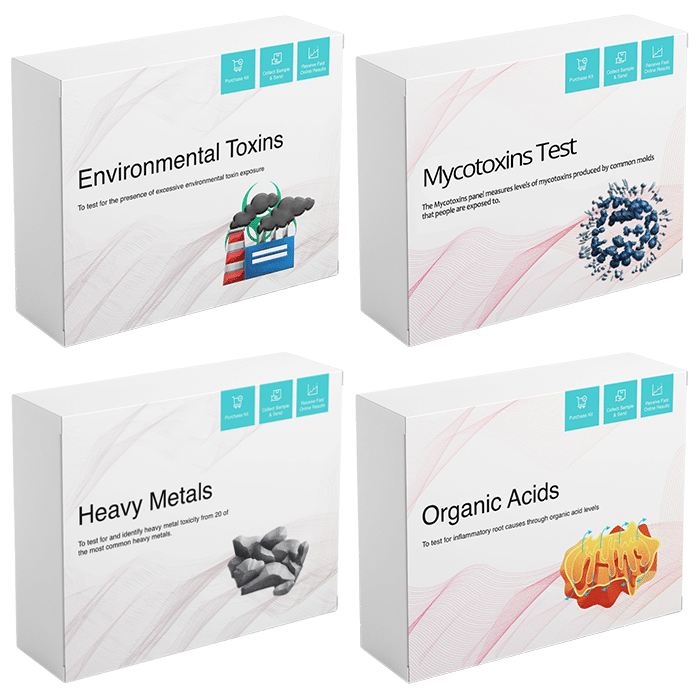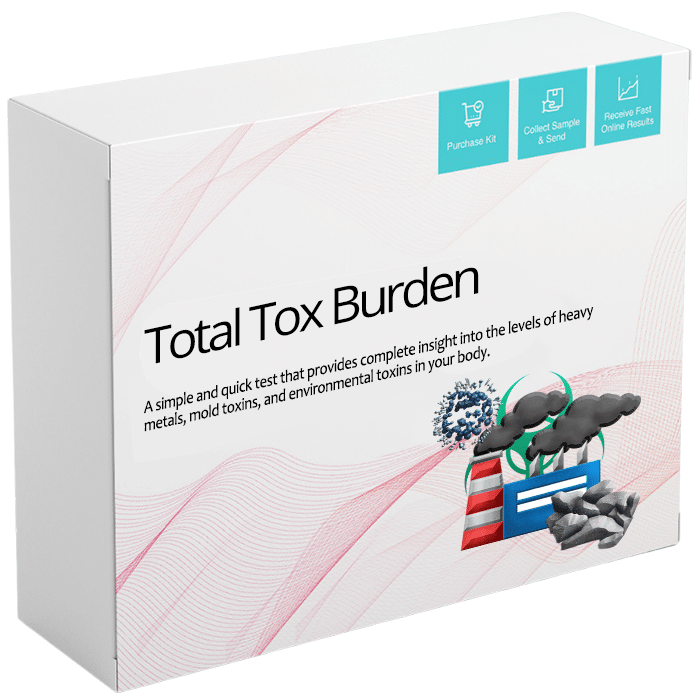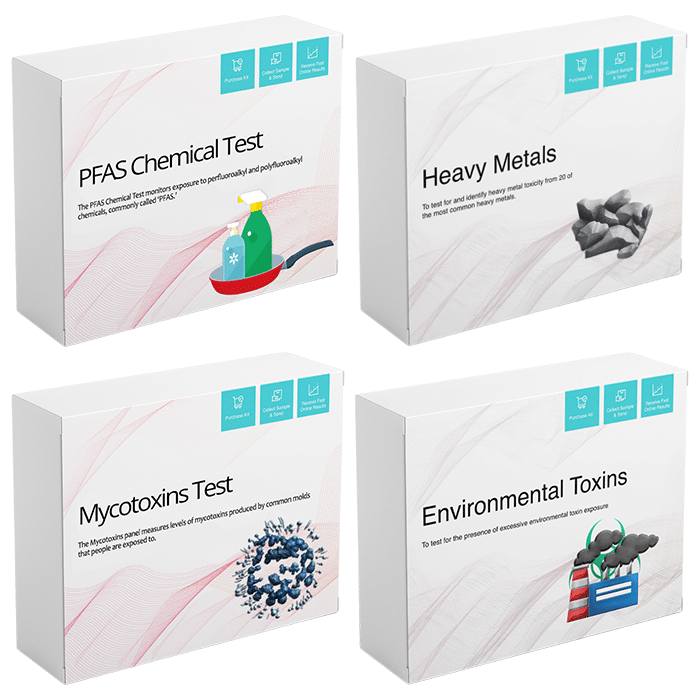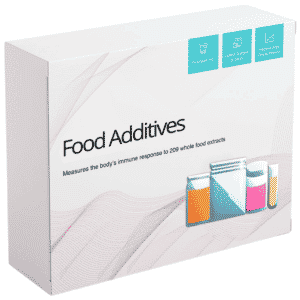Description
Wheat Zoomer: At-home test, dried blood spot collection

1 in 7 individuals in the United States has a wheat-related disorder.
As gluten- and wheat-sensitivity become better recognized in the medical community, the need for accurate and highly sensitive testing to identify affected individuals has grown. Vibrant’s answer is the Wheat ZoomerTM.
The Wheat Zoomer aids in the specific recognition of antibodies to wheat peptides – including gluten and non-gluten components, along with antibodies that indicate the presence of intestinal permeability. It is also a highly sensitive peptide-based array designed to detect autoimmune reactions to gluten.
Wheat Zoomer Sample Report
About Test
About Wheat Zoomer Test
This is a dry blood spot (DBS) collection that is done at home.
You will receive a kit with full instructions. When you receive your kit please open it up and lay out the instructions and contents of your kit and get familiar with them.
You will be sent a lancet (to prick your finger with), as well as a blood specimen collection card. Simply follow the instructions to 'fill' your card with blood spots.
View detailed collection instructions with images here (PDF)
STEP 1
Before you begin, make sure you will have at least 15 minutes of uninterrupted time. First, find a clean, open space to work on. Open the DBS collection kit and lay out all of your materials on the placemat (the last page) provided.
Please wear appropriate PPE ( personal protective equipment) while collecting the specimen from the patient.
* You will be given as many Blood specimen collection cards as required by your lab order.
* All DBS cards need to be filled for testing. Failure to complete all cards will result in the test not being performed.
STEP 2
Write the name and DOB on the card. Write the date and time on the blood specimen collection card.
STEP 3
Open the alcohol wipe.
STEP 4
Wash your hands and dry them with a clean towel. Make sure the water is warm, not hot.
This is very important as it will stimulate blood flow to the hands!
STEP 5
Choose a finger to poke on your non-dominant hand. If you are left-handed, choose your right hand. If you are right-handed, choose your left hand.
STEP 6
Choose an area on the side of your finger to poke (you'll see a visual in the instructions).
STEP 7
Pick up your lancet and twist the cap off.
STEP 8
Rub your finger from base to tip.
STEP 9
Put the lancet down and wipe the tip of your finger with the alcohol wipe.
Make sure to only wipe the finger in one single swoop!
STEP 10
With your palm facing up, press the lancet to your finger until you hear a click and feel a slight pinch.
STEP 11
Wipe the first drop of blood away with a gauze pad.
STEP 12
Milk your finger from base to tip to produce more blood.
STEP 14
Let the blood drop fall from your fingertip into the collection circle.
DO NOT touch your finger to the card. Fill the circle as full as possible, but do not add a second drop of blood to a circle. If necessary, use a second lancet!
STEP 15
After filling in all of the collection card circles, use your gauze pad to wipe the blood, apply pressure and apply a bandage.
STEP 16
Please discard the bio waste, including used lancet, alcohol pads, and gauze sponge, in an appropriate Biohazard waste container.
STEP 17
Let your collection card sit for at least 2 hours to dry before sending it back to us.
Keep the collection card in a cool, dry place away from sunlight.
Do not add additional blood drops after blood spots have dried.
Blood spots will darken as they dry.
STEP 18
After the blood spots have dried for at least 2 hours, fold the collection card, place it in the biohazard bag along with the humidity indicator and silica gel packs, and seal it tight.
STEP 19
Place the biohazard bag into the bubble mailer. Wash hands to prevent contamination. Please schedule Fedex Pick up for the specimen to be picked up from your office.
The Vibrant Experience
Vibrant America is a leading science and technology company delivering life-transforming laboratory services using an integrated microarray platform that enables multiplex testing at an affordable cost.
Vibrant’s relationship with its patients and providers is special. We go out of our way to provide the value and resources our providers need to accurately interpret test results and give patients the most accurate health information.
The Most Accurate In the Industry
All tests run on Vibrant’s proprietary 3Dense microchip technology platform boast an unrivaled specificity and sensitivity – which translates to the highest standard of accuracy of results in the lab industry.
Our Lab Technology
Vibrant America is at the forefront of modern medicine. Our technology was developed out of passion for better medicine, and we believe that automation is the key to high-quality and accurate test results. Multiplexing tests on a single sample enable a fast turnaround time.
Our Mission
Dedicated to bring clinically relevant test at a rapid pace to enable affordable high-quality diagnostics to every individual.
- High-quality lab service
- Fully automated systems
- Low cost
- Fast Turn Around Time
Quality and Security
All of our laboratory testings is done in a CLIA and CAP-certified laboratory in California.
Vibrant America's Compliance Overview
FAQ
FAQ
How do I know if my blood spots are big enough?
You’ll know if you have enough blood if the blood spot fills most of the collection circle. Try your best to fill all five circles.
My blood drops fell outside of the collection circles. Is this okay?
Yes, it is fine if the blood drops don’t fit neatly into the circles, but try to get them as close as possible.
I am nervous to poke my finger. What should I do?
Most people have said that the anticipation is worse than the poke itself. It should only feel like a slight “pinch.”
I poked my finger but am not getting enough blood out. What should I do?
First, try standing up and milking your finger below your waist. You can also try shaking your hand below your waist. If that doesn’t help, you can run your fingers under warm water while milking them to stimulate blood flow.
If blood still isn’t flowing, it has probably clotted. Wipe your finger with the alcohol wipe and apply a bandage. Try again later. It may help to take a break and drink a glass of water and move around. This will help stimulate blood flow to your fingers. Then, try again. This time poke another finger or a different spot on the same finger, and then try the process again.
What medications can interfere with the Wheat ZoomerTM test results?
As with all antibody testing, immunosuppressant and corticosteroid drugs can reduce antibody production and cause false negative results. A patient should ask their pharmacist if their prescribed medications are immunosuppressant or steroid-class medications. If so, it is recommended to wait 30-60 days (immune-response is individually variable) after completing the prescription for it to clear the system and allow the normal production of antibodies. This is required for accurate antibody measuring. Do not stop these medications without instructions from your prescribing doctor. A list of immunosuppressive drugs can also be found here: https://www.drugs.com/drug-class/immunosuppressive-agents.html
Inhalers can affect test results. Wait two weeks after completion of the inhalant dosage before collecting the specimen. Do not stop these medications without instructions from your prescribing doctor.
Certain infections can interfere with test results.
For best assessment, it is important for a physician to evaluate total immunoglobulins (total IgG and total IgA) to determine a patient’s baseline immunoglobulin production and thus accuracy of a patient’s antibody response. Total IgG and total IgA are available on the Vibrant Wheat ZoomerTM.
Does the patient need to be actively eating gluten to run the Wheat ZoomerTM?
Our Vibrant Clinical Team does not recommend a “gluten challenge” to a patient who is already aware they have adverse symptoms driven by gluten. However, with any antibody testing, if the antigen (in this case gluten or other peptides in wheat) has been removed for a significant amount of time (variable amongst individuals), the body will no longer mount an IgA/IgG antibody response and will render an antibody test as a “false negative”. Such is the case with our Wheat ZoomerTM test.
However, the Wheat ZoomerTM looks at more than gluten and wheat antigens, and if a patient is still experiencing symptoms, it would be helpful to look at the intestinal permeability (“leaky gut”) panel from the Wheat ZoomerTM. Also, many of our practitioners find that running a Wheat ZoomerTM can demonstrate a person’s true compliance in following a gluten or wheat free diet. As we know, it’s extremely difficult to eliminate gluten 100%, and often patients will be obtaining gluten from a hidden source unknown to them and will produce an antibody response. Research suggests that a single exposure from gluten can elevate antibodies anywhere from 2-6 months in a person (and this varies individually). Therefore, while the Wheat ZoomerTM does hold a little more clinical utility and direction if a person is actively consuming gluten, there is still useful insight in an already gluten-free patient
What is the distinction between IgG and IgA antibodies?
A primary piece to understanding antibodies is their area of origin. IgA antibodies are produced by saliva, tears, and mucous linings in the lungs and the intestines. IgG antibodies are the most abundant in serum and are produced by almost every cell in the body. IgG antibodies can cross the placenta.
These antibodies also have considerably different half-lives. IgA antibodies have a half-life of ~6 days. Elevated IgA antibodies indicate exposure 8-12 days ago. The half-life of IgG is much longer and individually variable and can indicate prolonged exposure/sensitivity.
IgA antibodies are produced by the intestinal mucosa as a defense mechanism. If IgA antibodies are elevated to a particular protein (antigen), this can indicate an immune response to mucosal irritation or damage. Elevated IgG antibodies means that there is exposure of these foods to the bloodstream and the body is producing antibodies.
Specific to celiac disease, tissue transglutaminase IgA is a definitively diagnostic biomarker, whereas IgG is not.
In terms of food sensitivities and intestinal autoimmune disease, IgG antibodies can occur as a consequence of and can be downstream to intestinal permeability. These are likely correlated with more systemic immune responses (brain fog, fatigue, skin, migraines, etc). Vibrant Wellness does not measure IgG subclasses.
As with all immunoglobulin testing, it is important to evaluate the person’s baseline levels of (total) IgA and IgG. These biomarkers are included in the Vibrant Wheat ZoomerTM.
Can I use the Wheat ZoomerTM in the pediatric population?
Yes! The Wheat ZoomerTM has been validated in the pediatric population effective May 2018. If a Wheat ZoomerTM is ordered on a person under age 18, the test report will automatically be adjusted to reflect the pediatric reference ranges.
Is fasting required for the Wheat ZoomerTM test?
Fasting status will not influence antibody results and the majority of the Wheat ZoomerTM measures antibodies to antigens specific for celiac disease and gluten/non-gluten wheat peptides. Fasting status may influence serum zonulin levels (the Wheat ZoomerTM measures both serum zonulin and zonulin antibodies). Serum zonulin can elevate following a meal, particularly a meal containing gluten, and then can remain elevated for ~6-8 hours.
Are certain foods that are thought to be “cross reactive” with gluten likely to influence the Wheat ZoomerTM results?
The Vibrant Wheat ZoomerTM is a peptide level microarray platform, where IgG and IgA antibodies are measured against wheat peptides. Because peptides in foods are highly specific to the food from which they are derived, they cannot induce “cross reactivity” or be confused by the immune system for another food protein.
When should I re-test after doing the Wheat ZoomerTM test and going off gluten/wheat?
It is ideal to avoid wheat/gluten for at least 4 months prior to the next test, however, for economic and/or other reasons, it may be more suitable to wait 6 months to a year prior to doing another Wheat ZoomerTM test.
My Vibrant Food SensitivityTM results show no reaction to wheat, but my Wheat ZoomerTM shows a reaction to wheat. Are my results wrong?
While our Food SensitivityTM test is run on our microchip platform and has great reproducibility (the highest in the industry), it is a protein level antibody test. This is different than our Wheat ZoomerTM, where we have synthesized the entire wheat proteome at the peptide level. Thus, the Wheat ZoomerTM is such a magnified look at how our immune system can react to wheat, there’s no way looking at a single “wheat” protein antigen can offer that same view.
Why should my patient with autoimmune disease have a Wheat ZoomerTM done when they have no GI symptoms?
15-20% of people with celiac disease have no GI symptoms. However, because of villous atrophy, they are not absorbing nutrients efficiently, so their condition may worsen or they may develop another autoimmune disease if root causes such as gluten or wheat sensitivity, celiac disease, or intestinal permeability are not addressed.”


